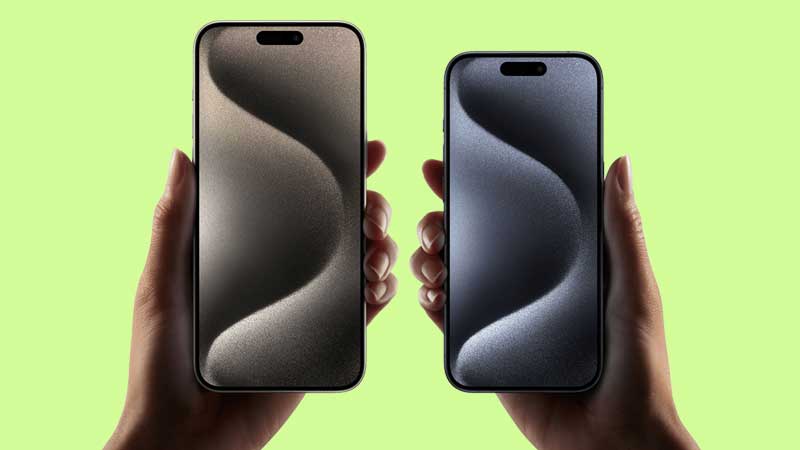In the era of smartphones, the size of the phone screen plays a pivotal role in the user experience. From compact screens suitable for one-handed use to large displays ideal for immersive entertainment, choosing the right size phone screen is essential. In this comprehensive guide, we’ll delve into the factors influencing your decision and provide practical tips to help you determine the perfect phone screen size for your needs.
Understanding Smartphone Screen Sizes
Before delving into choosing the perfect phone screen size, it’s crucial to understand the range of options available in the market. Smartphone screens come in various sizes, ranging from small to very large, catering to diverse preferences and usage scenarios.
Small Phone Screens
Small phone screens typically measure 5.8 inches (14.7cm) or smaller, offering compactness and ease of handling. While these phones may not be ideal for extensive multimedia consumption, they excel in portability and convenience. Small screens are suitable for tasks like making calls, sending messages, and basic app usage.
Average Phone Screens
With screen sizes ranging from 5.8 to 6.2 inches (14.7 to 15.7cm), average phones strike a balance in portability and multimedia capabilities. They fit comfortably in most pockets while providing sufficient screen real estate for occasional movie-watching or gaming sessions.
Large Phone Screens
Large phone screens, typically between 6.2 to 6.4 inches (15.7 to 16.3cm), offer immersive viewing experiences ideal for prolonged movie watching and gaming. However, their size may hinder one-handed usability and pocketability, requiring users to prioritize screen size over portability.
Very Large Phone Screens
Phones with very large screens, measuring 6.4 inches (16.3cm) and larger, provide expansive displays but sacrifice portability. These devices may not fit comfortably in pockets and require two-handed operation for optimal usability.
Factors Influencing Your Decision
Several factors influence the decision-making process when choosing the perfect phone screen size. Consider the following aspects to ensure your smartphone meets your needs and preferences:
Hand Size and Comfort:
Evaluate your hand size and comfort level when handling smartphones of different screen sizes. Conduct simple tests, such as swiping your thumb across the screen or holding the phone in your hand, to assess reach and comfort.
Usage Patterns:
Reflect on your usage patterns and priorities. If you primarily use your phone for basic tasks like calls, messaging, and web browsing, a smaller screen may suffice. Conversely, if you indulge in extensive multimedia consumption or gaming, opt for a larger screen size for a more immersive experience.
Portability vs. Screen Real Estate:
Strike a balance between portability and screen real estate based on your lifestyle and preferences. While larger screens offer enhanced multimedia experiences, they may compromise portability. Consider whether fitting your phone comfortably in your pocket is a priority or if you prioritize a larger screen for multimedia enjoyment.
How to Decide on the Perfect Phone Screen Size
Choosing the perfect phone screen size requires careful consideration of personal preferences, usage patterns, and ergonomic factors.
Assess Your Hand Size:
Begin by assessing your hand size and comfort level when handling smartphones. Experiment with devices of different sizes to determine the optimal screen size that allows for comfortable one-handed operation.
Determine Your Usage Patterns:
Reflect on your usage patterns and preferences. Identify whether you primarily use your phone for basic tasks like calls, messaging, and browsing or if you indulge in extensive multimedia consumption, gaming, or productivity tasks.
Conduct Ergonomic Tests:
Perform ergonomic tests to evaluate reach and comfort. Swipe your thumb across the screen in a curved arch to gauge reachability. Consider whether you prefer using your phone with one hand or if you’re comfortable with a two-handed operation.
Consider Portability:
Factor in portability considerations, such as pocketability and ease of handling. Determine whether you prioritize a compact device that fits comfortably in your pocket or if you’re willing to sacrifice portability for a larger screen size.
Evaluate Screen-to-Body Ratio:
Pay attention to the screen-to-body ratio of smartphones, which indicates the thickness of bezels surrounding the screen. A higher screen-to-body ratio signifies a more immersive viewing experience and a compact form factor.
FAQ’s
What are the benefits of choosing a larger phone screen for multimedia consumption?
Choosing a larger phone screen for multimedia consumption offers several benefits, including enhanced immersion, improved viewing experiences for movies and gaming, and increased screen real estate for multitasking. Larger screens enable users to enjoy content in greater detail and clarity, making them ideal for entertainment enthusiasts.
Bottom Up
Selecting the perfect phone screen size involves a careful balance between personal preferences, ergonomic considerations, and usage patterns. By evaluating factors such as hand size, usage habits, and portability preferences, you can make an informed decision that ensures an optimal smartphone experience tailored to your needs. Whether you prioritize compactness for on-the-go convenience or prefer a larger screen for multimedia enjoyment, understanding your preferences is key to finding the ideal phone screen size.

